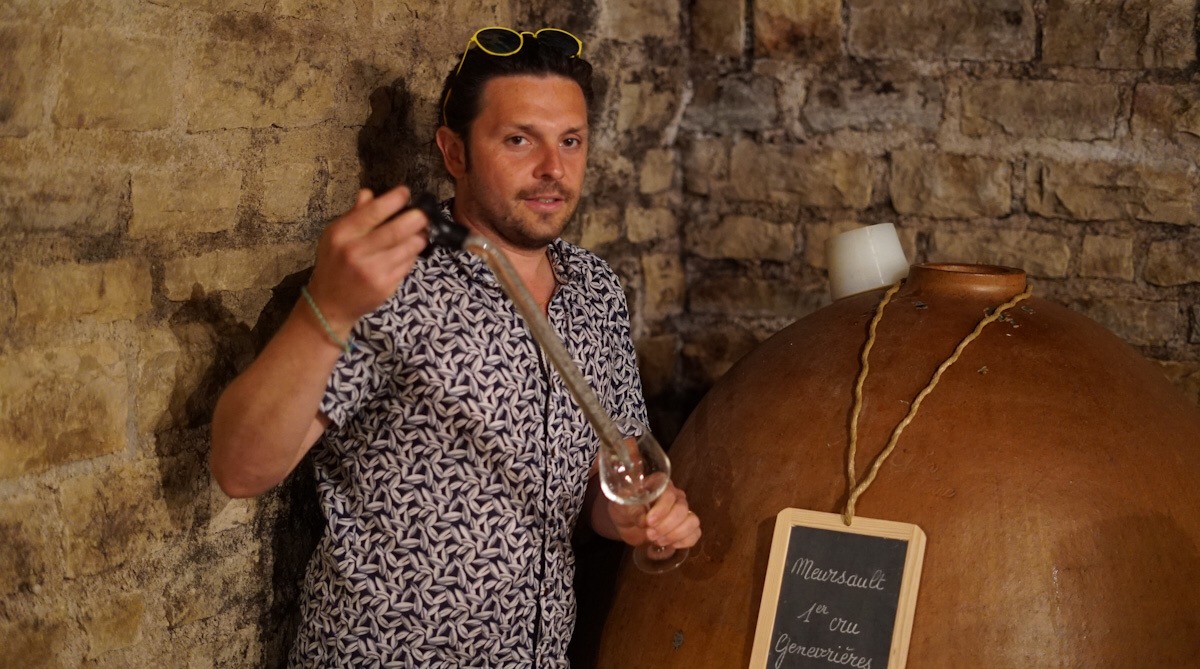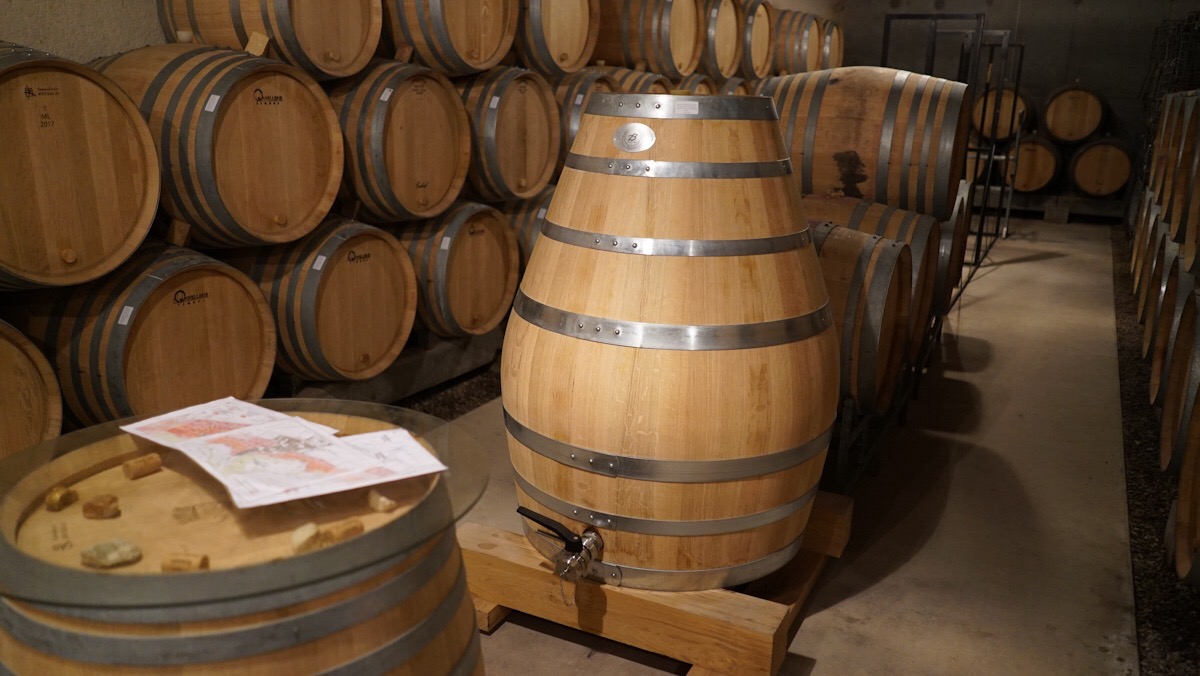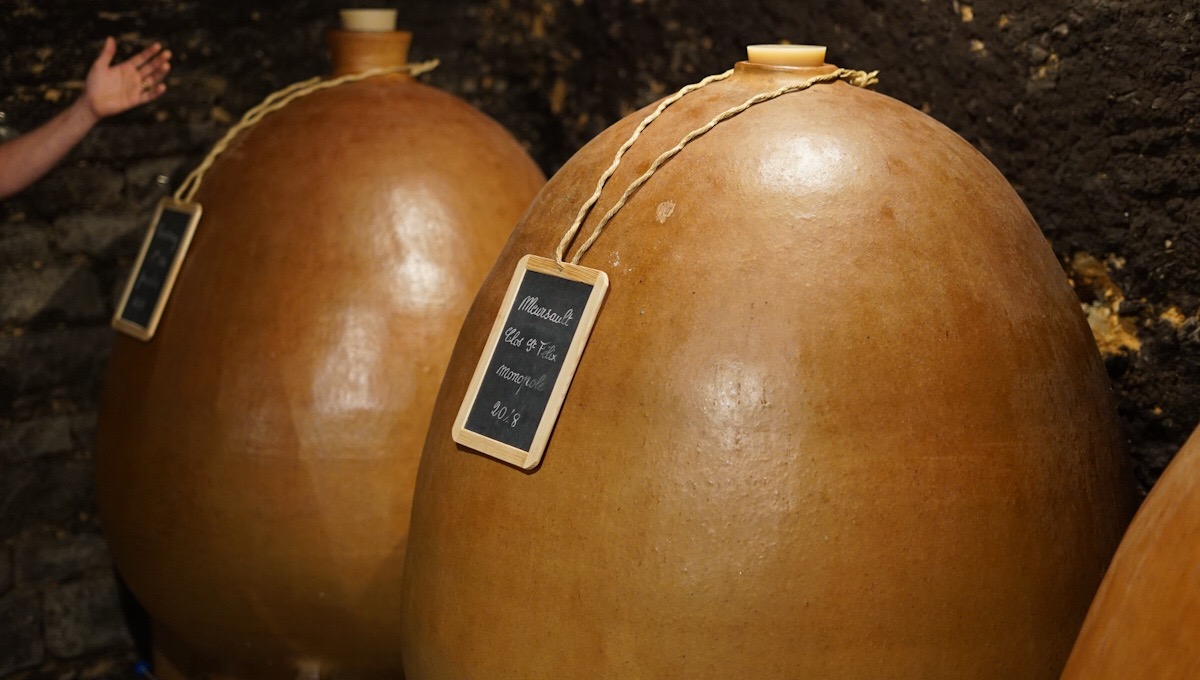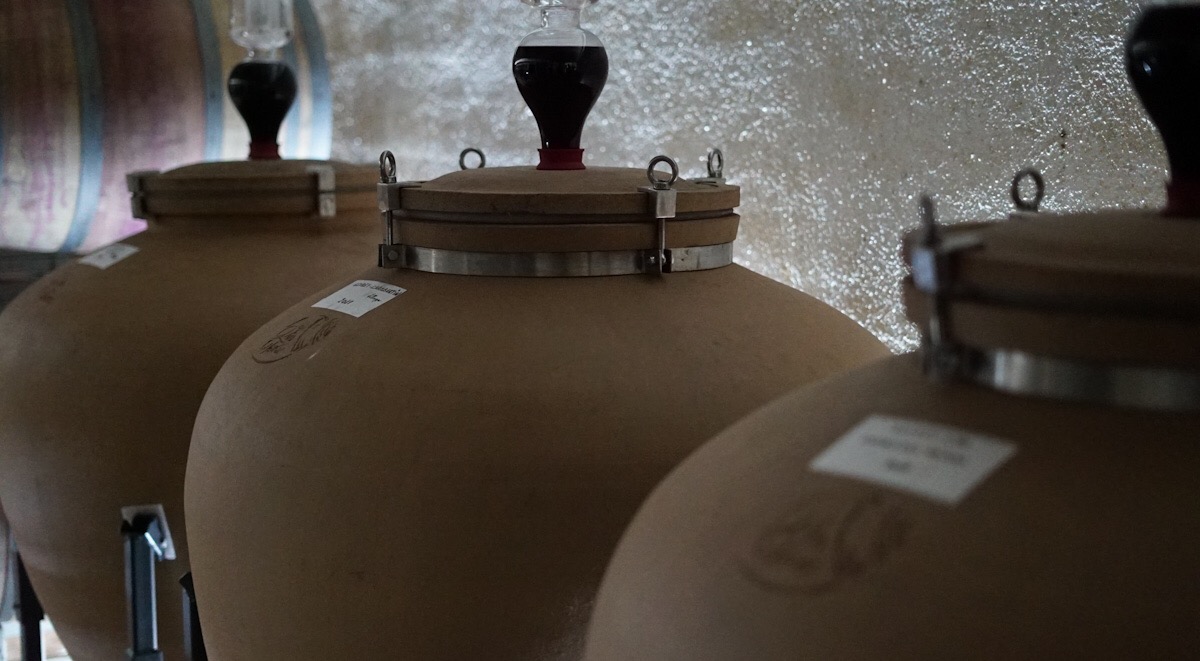In the words of an old geek and wine reviewer (me), the world of wine is getting more and more complex.
While we are used to tasting wines from standard (228-litre) barrels, their differences being only age and maker, there are now one or perhaps several new dimensions to this game: large barrels of 300 or 500 litres and amphorae of different shapes and materials.

Nicolas Mestre at Domaine Michelot
In reality, a Burgundian wine in bottle is usually a blend of different barrels, and this is what the taster has to understand and visualise/”tastualise,” as the future wine will be a blend of these different casks.
Adding new dimensions is not going the make this easier. Yet in the end it is still a question of blend, and of different elements in the blend: How different from each other are the elements blended?
Bottom line: It is always interesting to enjoy the complexity of modern cellar work. Although …
Tasting Burgundies – the difficult made simple
When you read reviews and tasting notes, you usually only see one version: the taster’s perception of the wine tasted. This is often derived from the tasting of a single barrel chosen by the producer, or perhaps a blend of two or three barrels made by the producer to simulate the final wine.
This works; yet sometimes the tasting situation is rather more complex, such as when the producer has different coopers with differing barrel ages from which to choose in presenting the wine.
The notion of “the Parker barrel” was a recognised phenomenon, indicating that some producers knew what some journalists preferred, and perhaps at the same time could deduce what others might dislike!
That being said, producers will normally choose barrels that are showing well on the day, and some have a systematic approach to a tasting: either blending new and old casks in an approximate final blend, or choosing older barrels, rather that tasting from new ones which would give too oaky an impression.
In fact, the easiest is tasting at domaines using 100% new oak, as this will in fact eliminate at least one factor – barrel age.
In the end there is rarely full transparency, and perhaps that’s a good thing. Tasting 20 wines where details of every cask must be considered – perhaps three different barrels per wine – is a breathtaking amount of information to process. And to communicate the details about the single barrels and their share in the blend? If one had to taste the component wines individually, it would probably be the end of wine tasting as we know it.
The barrels encountered
The most-used barrel used today is the 228-litre standard Burgundy barrel. But there are also larger formats: hautes futailles of 300 and 400 litres, puncheons of 500 litres, and finally demi-muids of 600 litres. Add to this the different shapes of barrels, and you get yet a different exposure to oak with identical volumes.
The oddly shaped barrels are made in different sizes, but are normally in larger format than the regular 228-litre barrel.
Amphorae are even more complex, as shape, size and material can vary. The photo below shows an egg-shaped amphora from Domaine Michelot (as far as I recall a 500-litre size).
Amphorae of a different shape are used in the Fourrier cellars in Gevrey – see below. They are beautiful to behold.
The material of the amphora “eggs” is normally some kind of ceramic composite, but these containers are still quite rare, so it will take time to know these well.
So, the Winehog take on barrels
Firstly, I think the experiments with barrels are very interesting, although also difficult to fully comprehend and explain. Growers are still experimenting, and few are firm in their opinions regarding the effect of using the different-sized casks and amphorae.
My take is that the larger-format barrels do seem to have an interesting impact on the wines – white and red – as they make the wines more open and airy and give a more coherent and holistic feel. Effortless is another word that springs to mind.
One explanation could be that the wines have more room to develop in the big barrels, and even more simply, that they are exposed to less oak. I have tasted mostly whites so far from the big barrels – but the promise is noteworthy.
Amphorae are more difficult, and I have a few clear observations of the effect of these containers. Amphorae can in some cases have the same effect as the big barrels, but whether this is due simply to the increased volume I cannot say. The wines do, however, have a somewhat more organic feel than those from large-volume casks. That said, they also seem in a sense less precise, yet still have this undeniably airy, organic feel to them.
I will try to taste more amphora wines to gain experience.
There remain a number of unanswered questions. Firstly, regarding the effects of the larger casks, it is unclear whether the container has a permanent effect on the wine or a temporary one that will fade after some time.
Secondly, there is perhaps a timing issue that should not be overlooked, as it could be that wine develops faster in some environments than others, hence making things appear more evolved rather than being fundamentally different.
Complexity is not for all
To be honest, the options and possibilities are a blessing for some, but for others they could lead to even more doubt and confusion.
Nicolas Mestre of Domaine Michelot is working with these new formats systematically and is exploring the possibilities thoroughly. This is also the case at Domaine Fourrier in Gevrey.
In other cases I have seen these barrels used more randomly, creating more confusion, rather than the clarity and useful conclusions sought.




 - A true vin d’émotion – a Burgundy of passion
- A true vin d’émotion – a Burgundy of passion - A truly hedonistic wine – lively and enjoyable
- A truly hedonistic wine – lively and enjoyable - A vivacious wine for pure indulgance
- A vivacious wine for pure indulgance - A potential vin d´émotion - frais et léger
- A potential vin d´émotion - frais et léger
Leave a Reply
You must be logged in to post a comment.